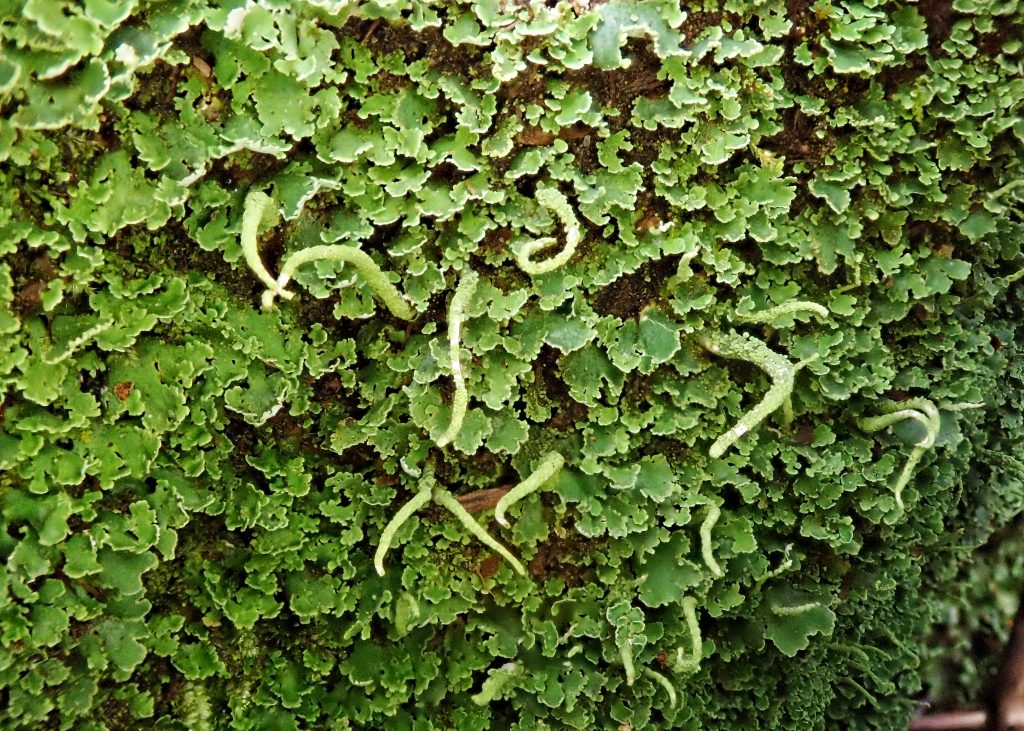
Cladonia as a genus has a bewildering array of forms and morphology, but, since the revision of the C. gracilis complex (Pino-Bodas, et. al.; 2011), Cladonia coniocraea is one of the easier ones to identify.
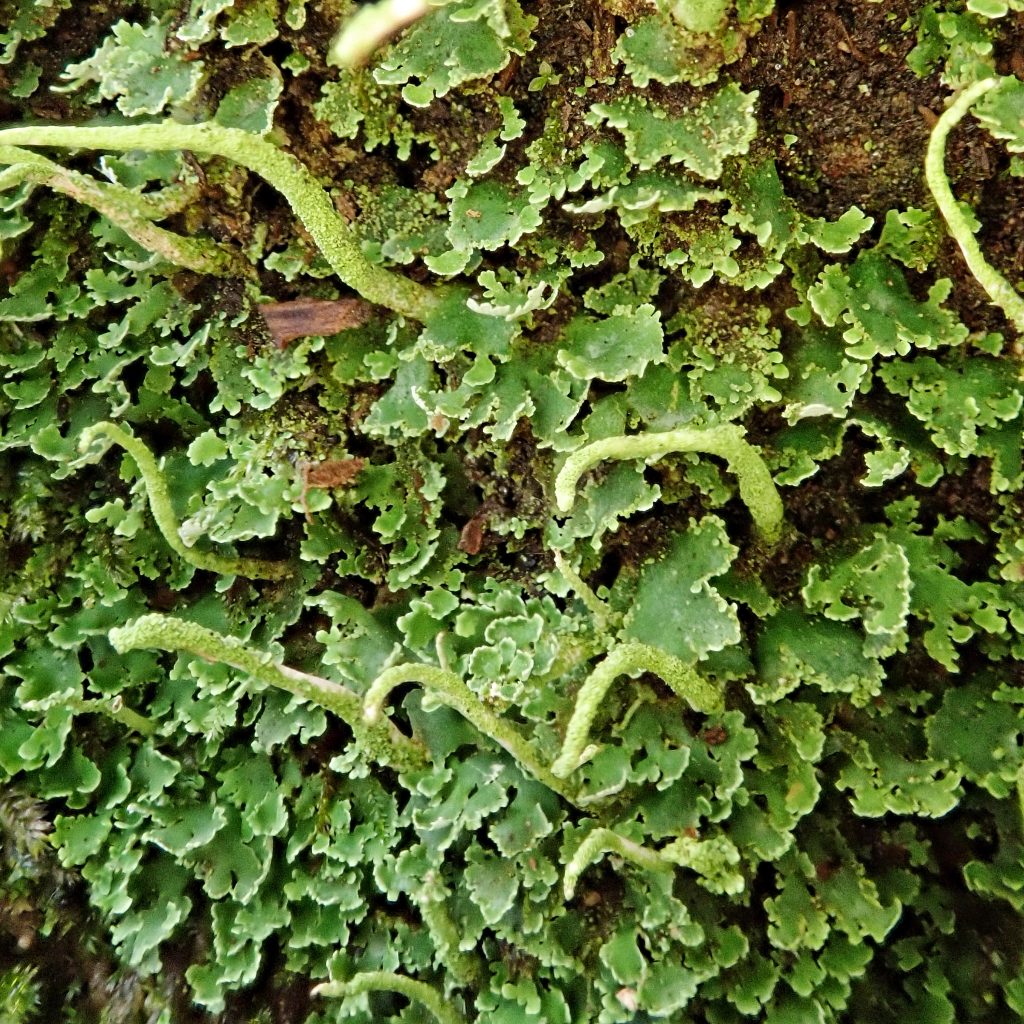
There are two groups of Cladonia: those with squamules, and relatively unbranched podetia, which make up the bulk of this genus; andthe former members of the genus Cladina (reindeer lichens), which are richly branched, lack a cortex, and have a granular thallus rather than squamules.
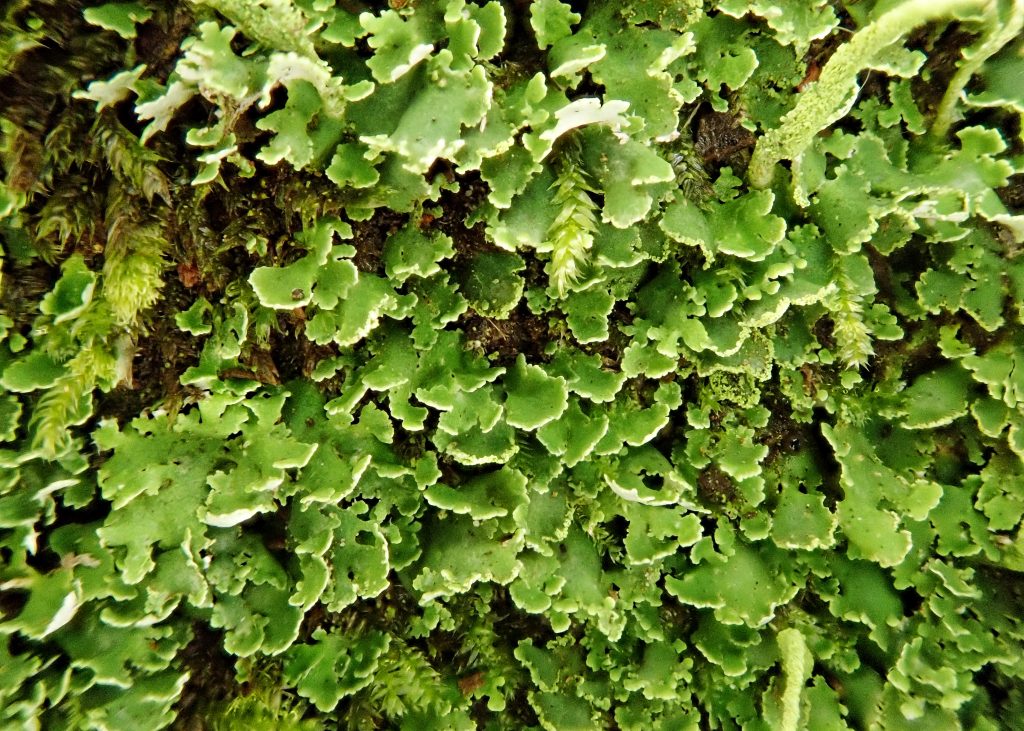
Only Cladonia have podetia, which are hollow stalks of secondary thallus that bear the apothecia (when present). They differ from the upright, hollow stalks of some lichens (e.g. Hypogymnia) by not having differentiated dorsal and ventral surfaces. Podetia often form cups at their tips, although C. coniocraea seldom does so.
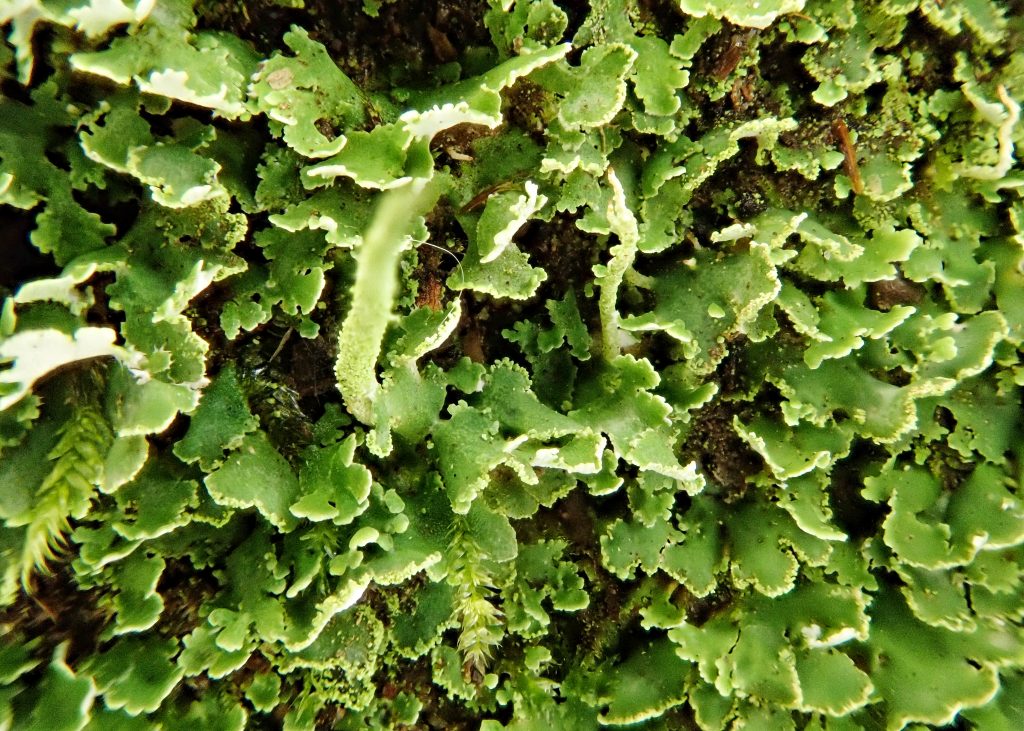
It is always a pleasure to find any Cladonia. Despite the array of forms in this genus the podetia always tell you that it is Cladonia. Cladonia coniocraea is one of the most abundant Cladonia that I seem to encounter. They create these small, intricate landscapes in the midst of the larger landscape, often adding a whole layer of color and texture to otherwise bare wood.
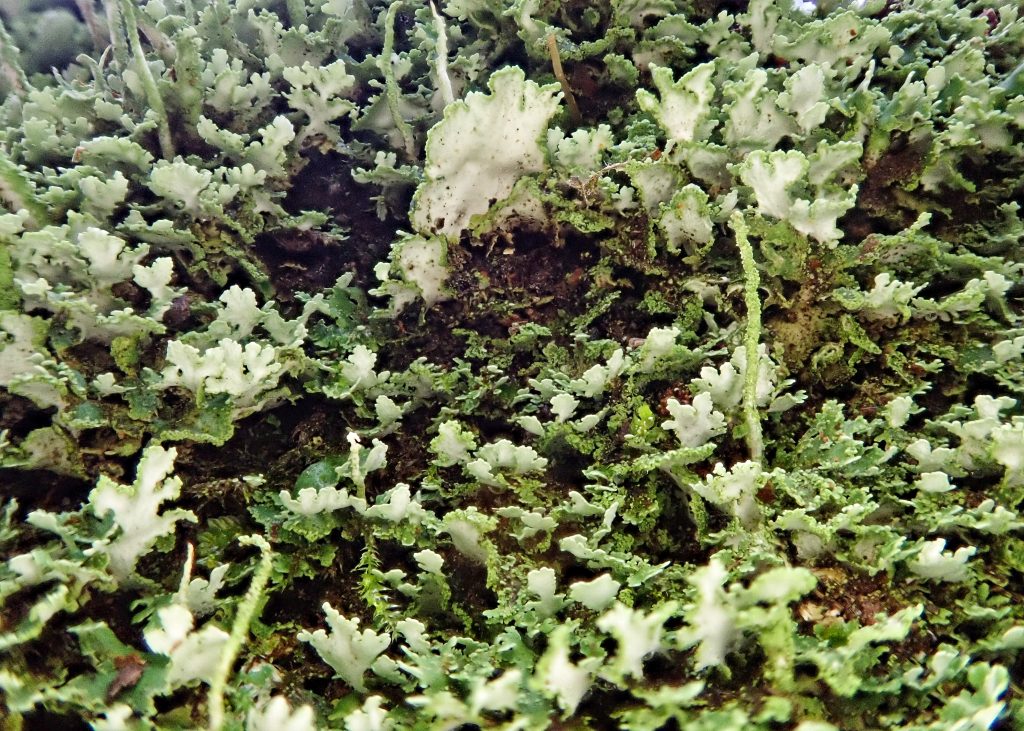
Description– Greyish green to olive squamules up to 6mm, rounded and usually lobed; usually sorediate on the margins, but lacking isidia; podetia arising from mid-squamule, greyish green with powdery soredia on the upper half; podetia usually pointed, but occasionally forming small cups the same width as the stalk. Medulla P+ orange/red.
Similar species– C. ochrochlora and C. cornuta ssp. groenlandica appear to be synonymous with C. coniocraea (Pino-Bodas, et. al. ; 2011); Cladonia cornuta ssp. cornuta is non-sorediate on the podetia, with cortical tissue along the whole length, and very small squamules; C. subulata usually has at least some podetia with branching at the tips, and the squamules are very small and usually disappear before the podetia are formed.
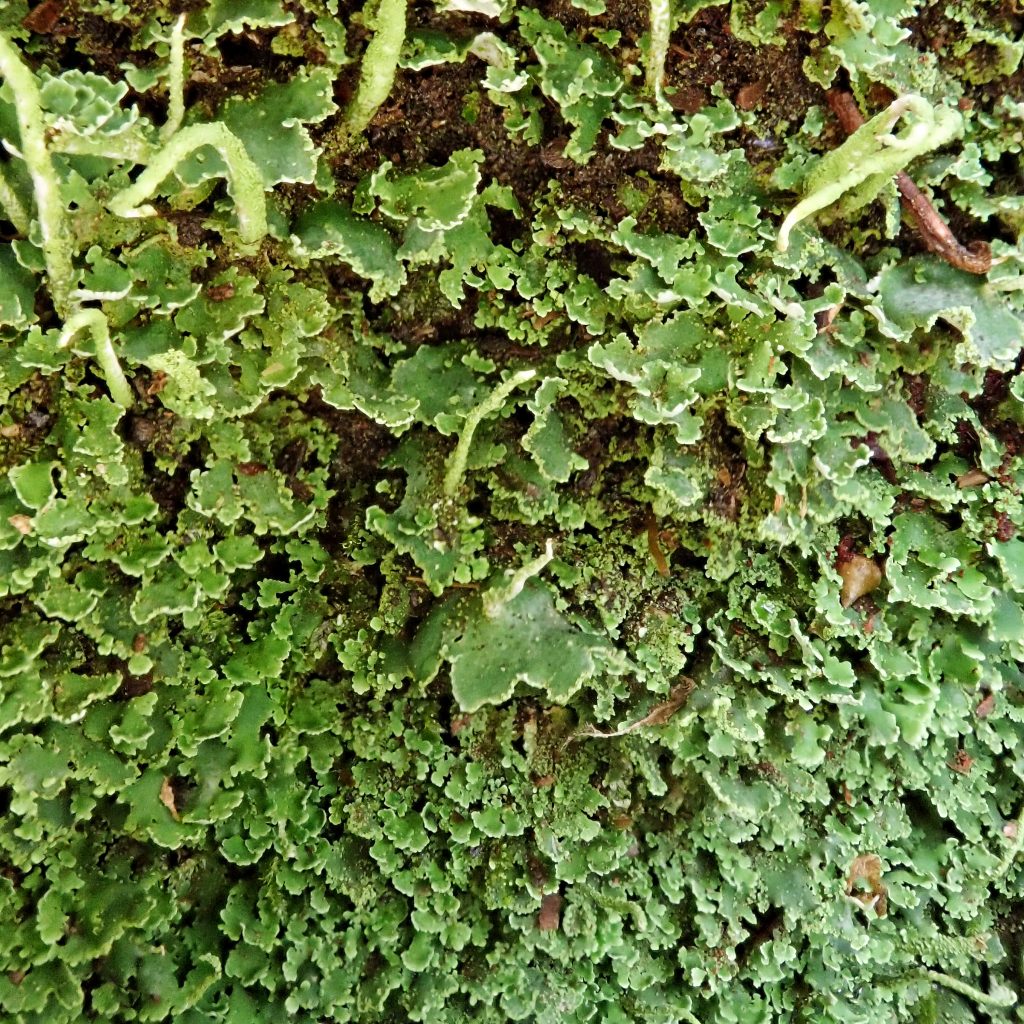
Habitat-Tree bases, logs, ocassionally on soil or soil over rock, in forested areas at all elevations.
Range-Holarctic; region wide in appropriate habitat
Etymology of names– Cladonia comes from the Greek and means ‘branched’, referring to the branching at the tips of the podetia of the type specimen of this genus, Cladonia subulata. The specific epithet coniocraea seems to reference the powdery soredia on the podetia (conio= dust/powder in Greek), and the suffix -craea may have something to do with the fact that the powdery soredia don’t extend all of the way to the base, although I cannot find that word in any of my Latin/Greek dictionaries.
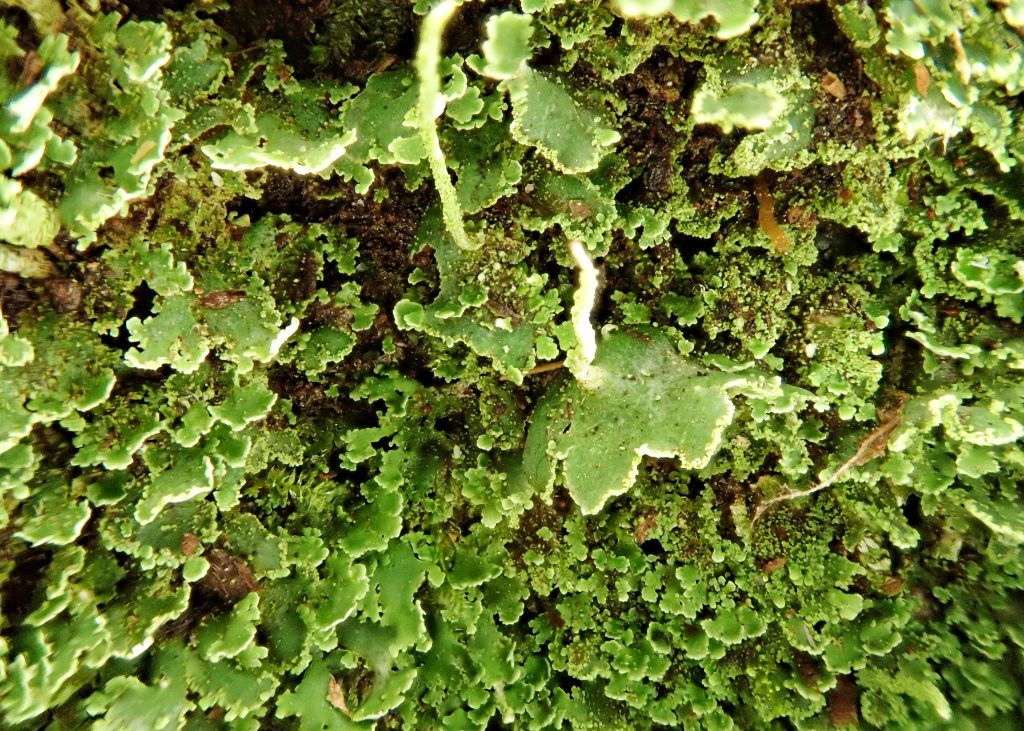
Cladonia coniocraea – Common Macrolichens of the Pacific Northwest
https://lichenportal.org/cnalh/taxa/index.php?taxon=53390&clid=1048
http://www.lichens.lastdragon.org/Cladonia_coniocraea.html
http://www.irishlichens.ie/pages-lichen/l-42.html
Lichen Characteristics Used in Identification Key
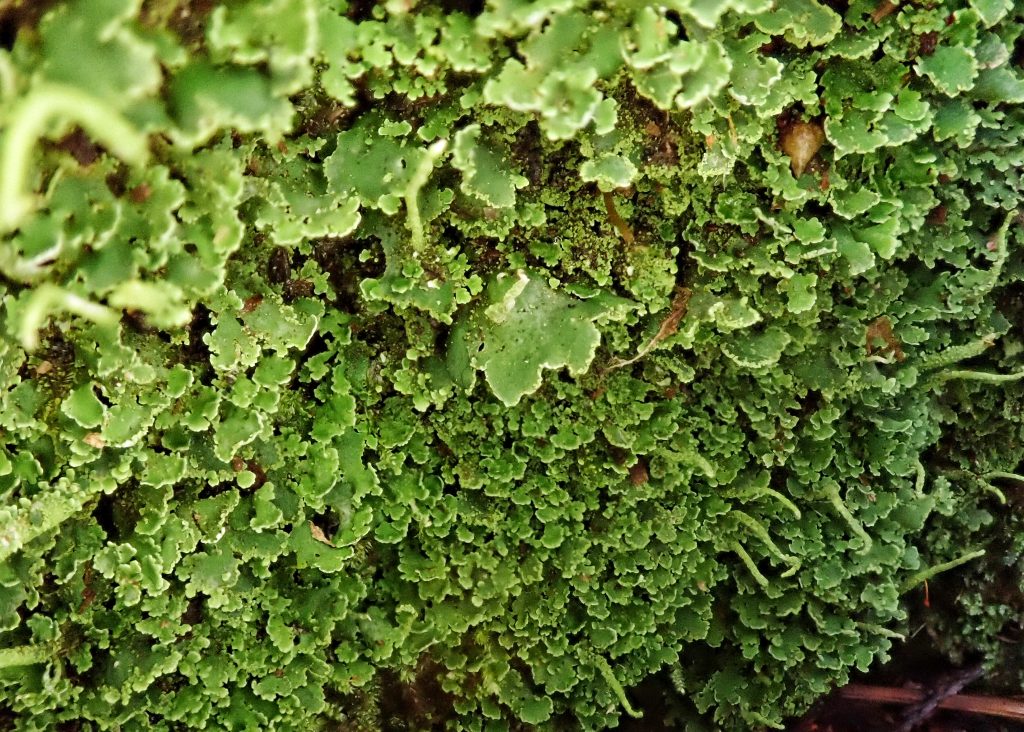
Glad I found you on Backyard Habitat.
GORGEOUS!! THANKS:)
Awesome! And very informative.
Beautiful! Thanks for the information.